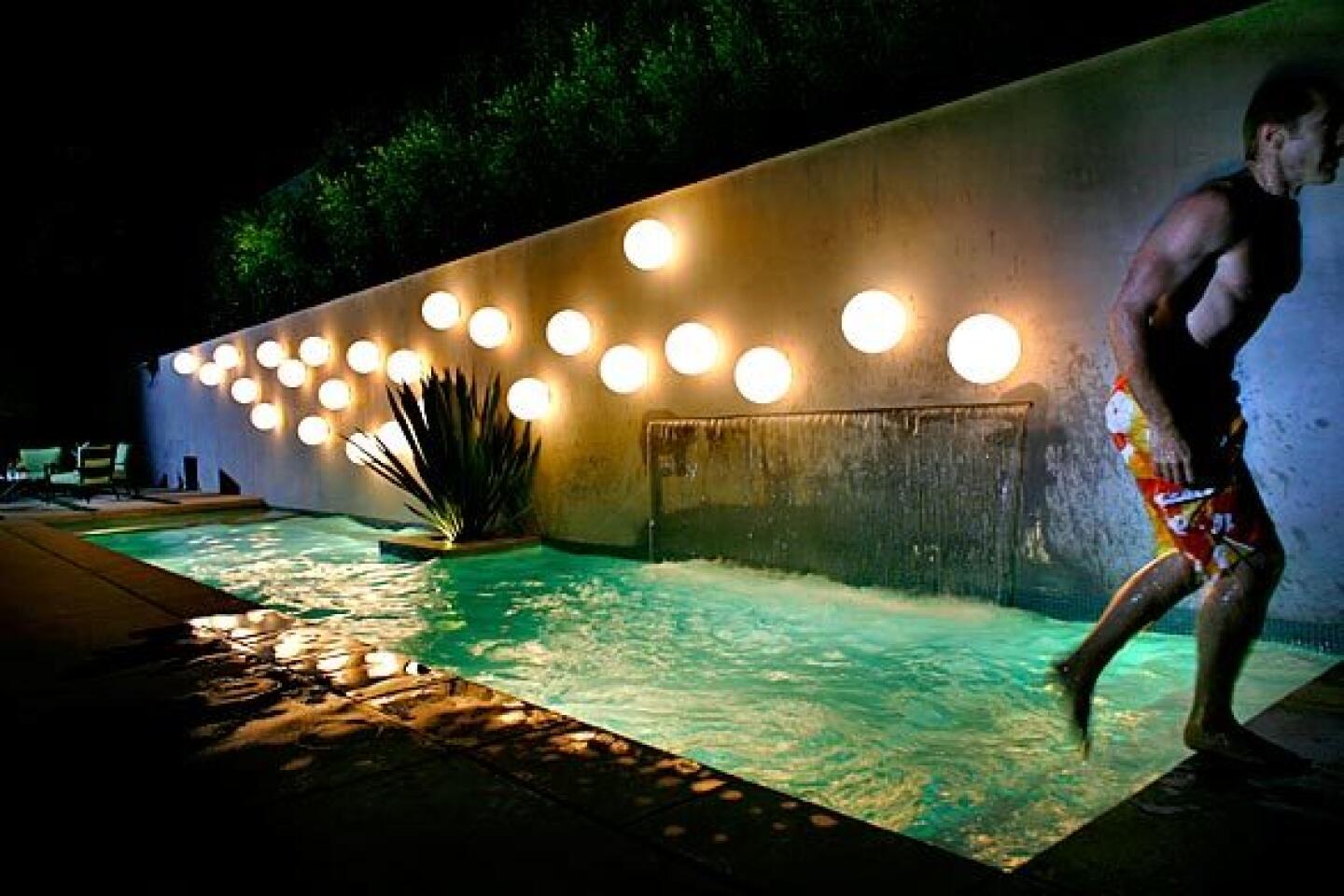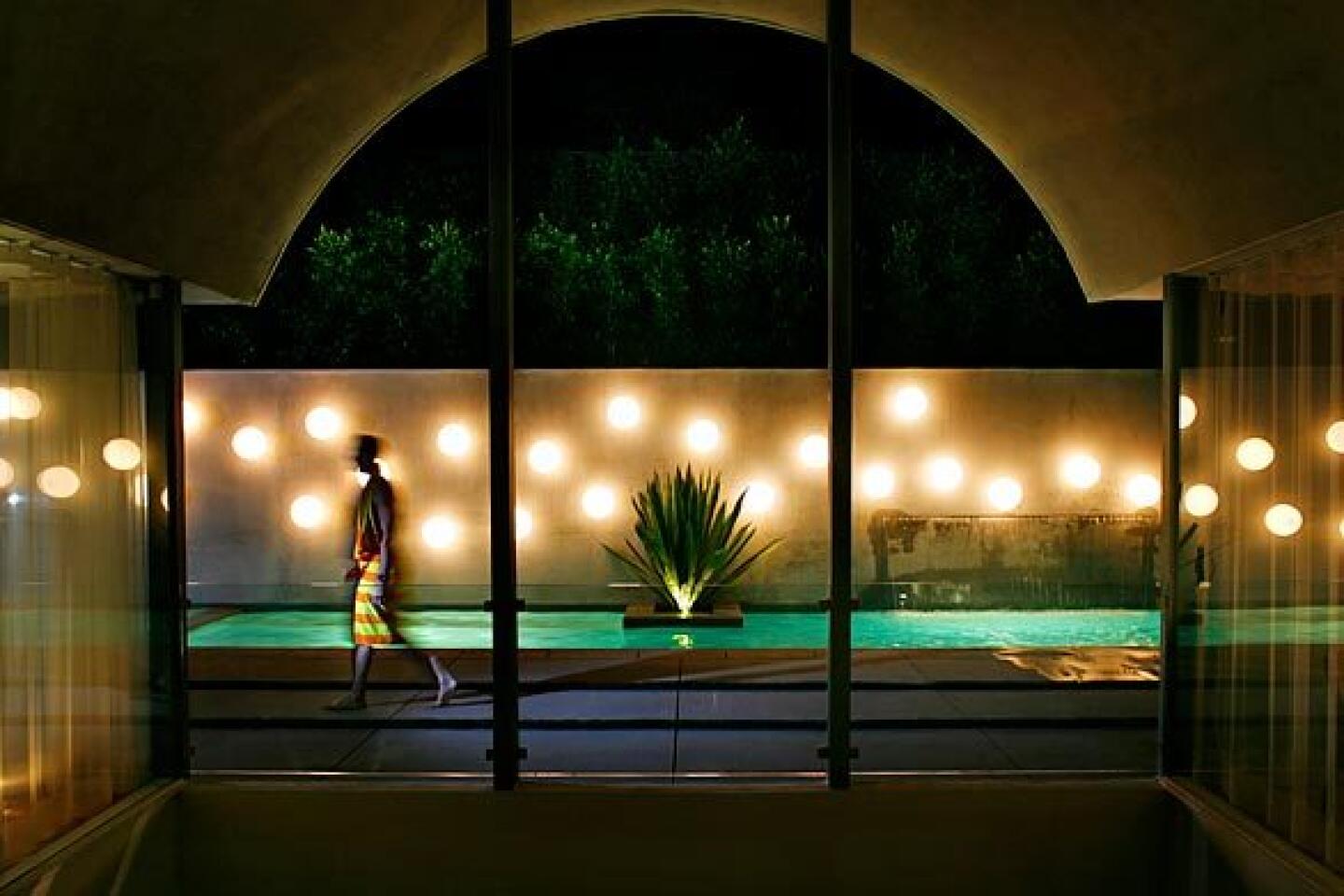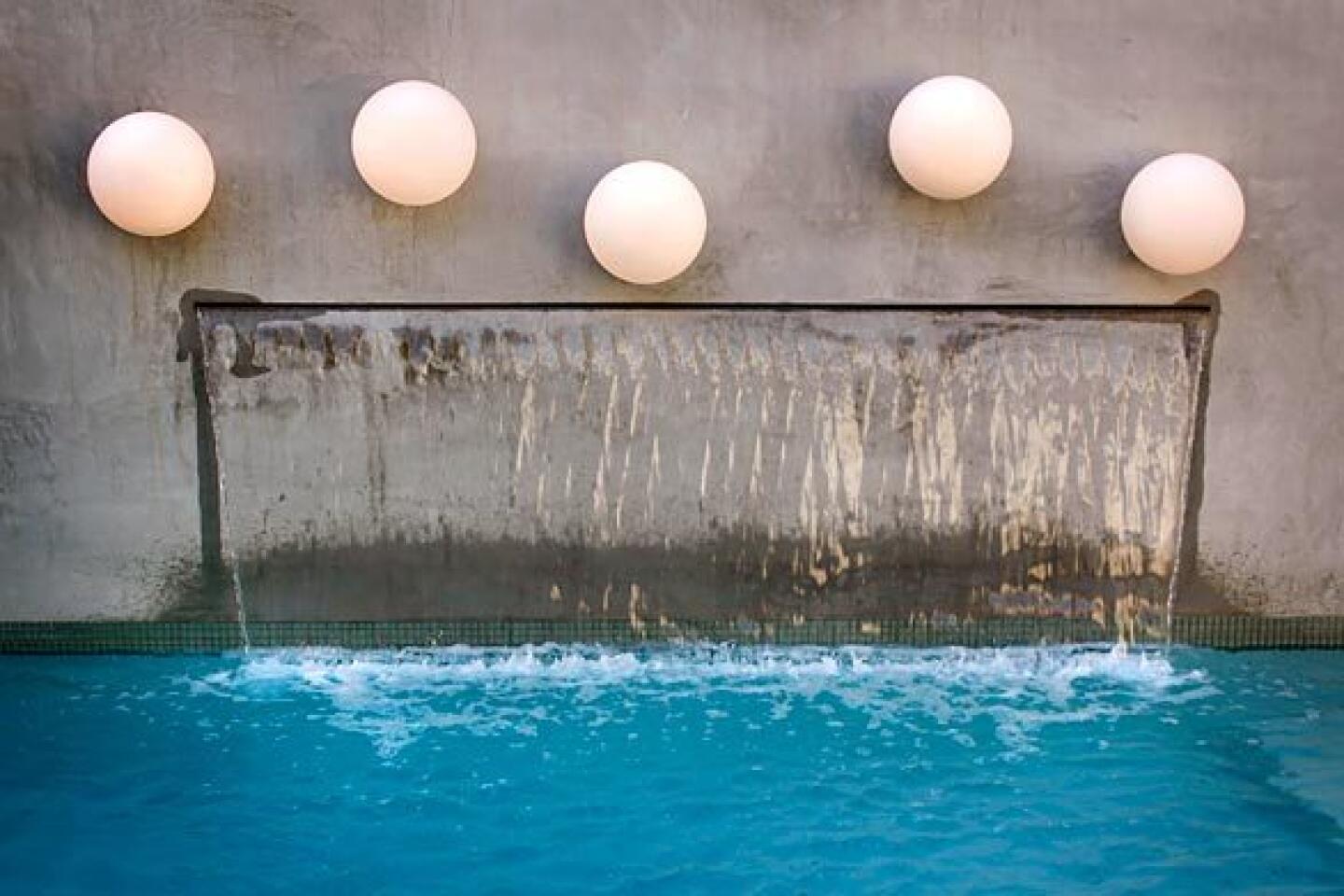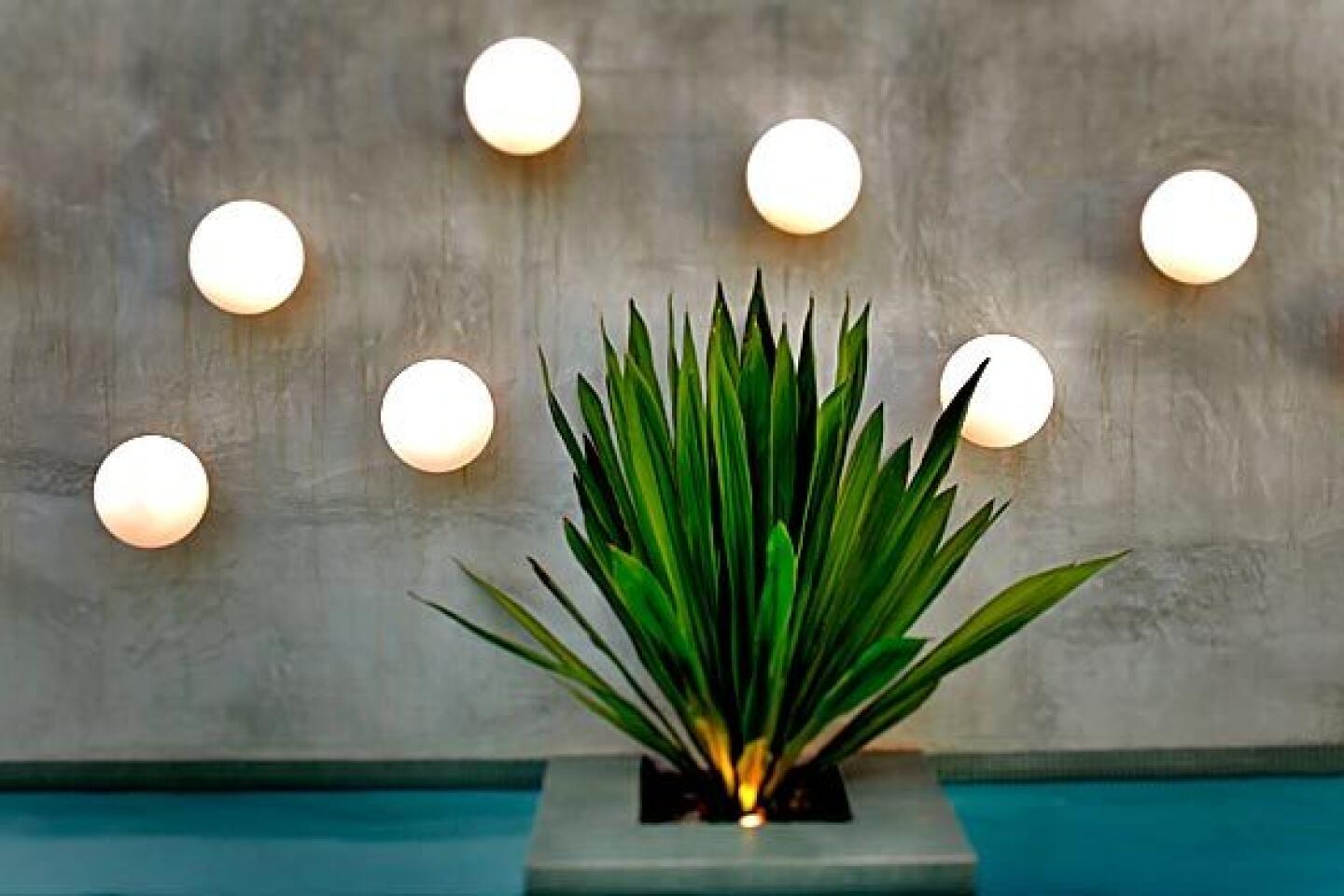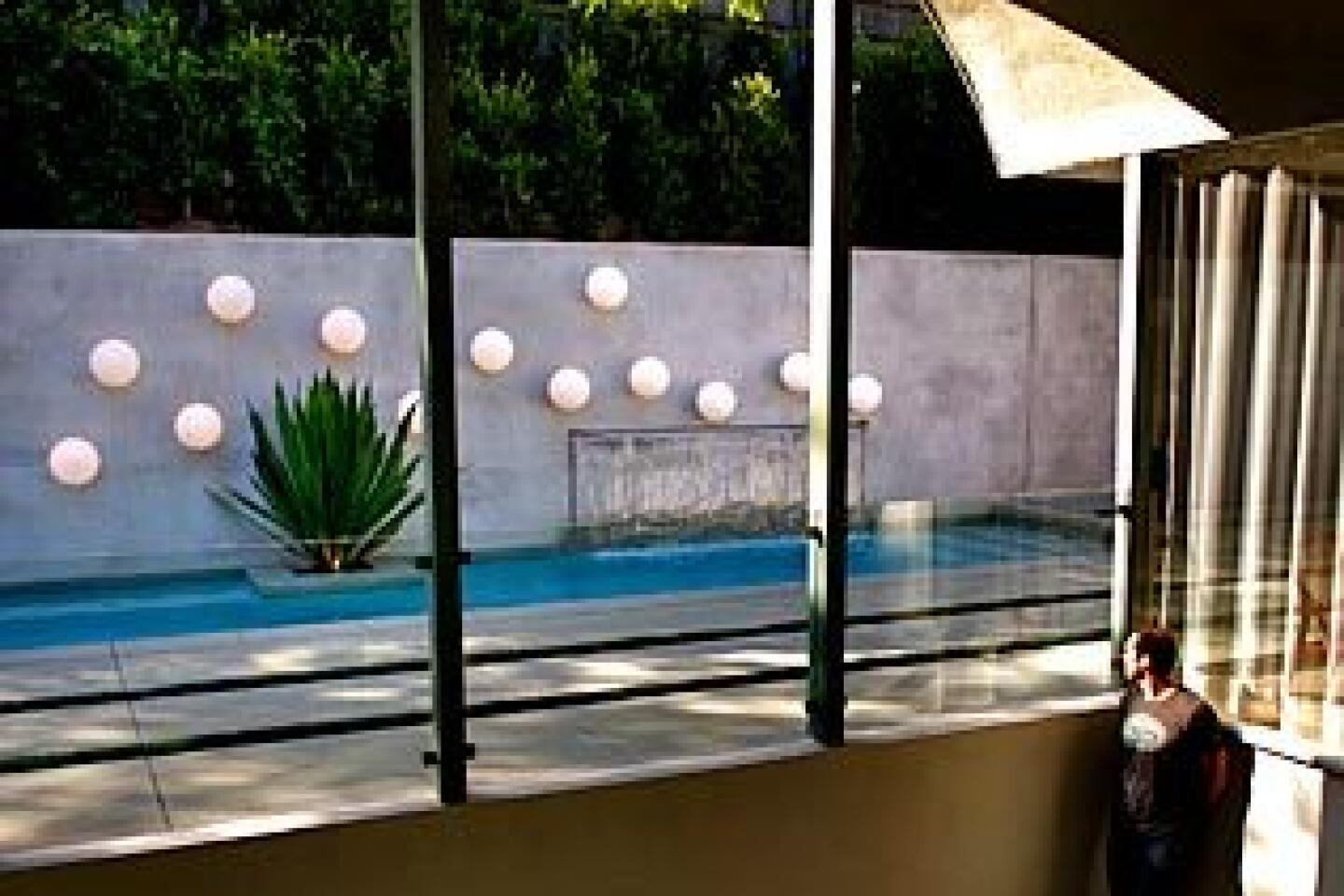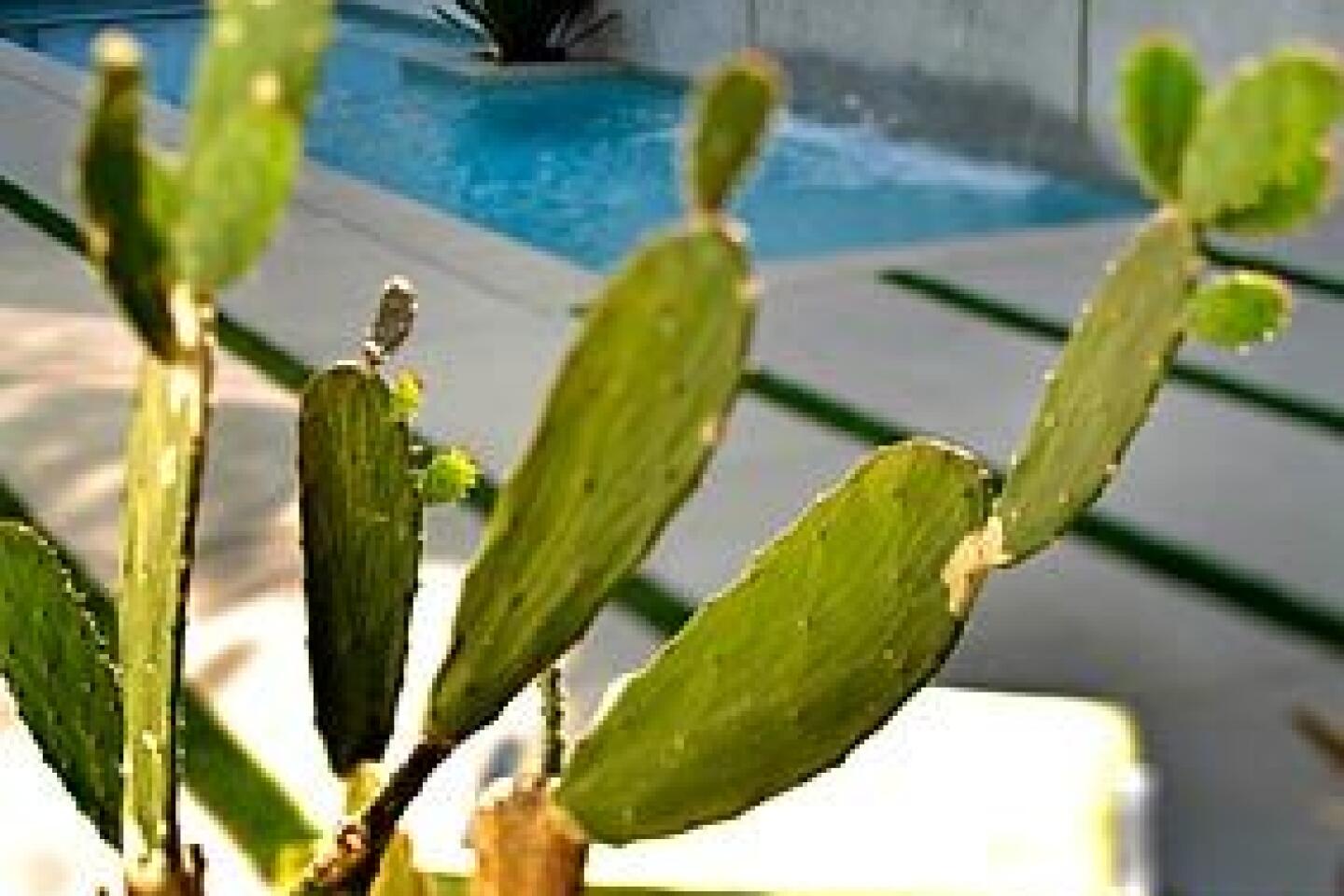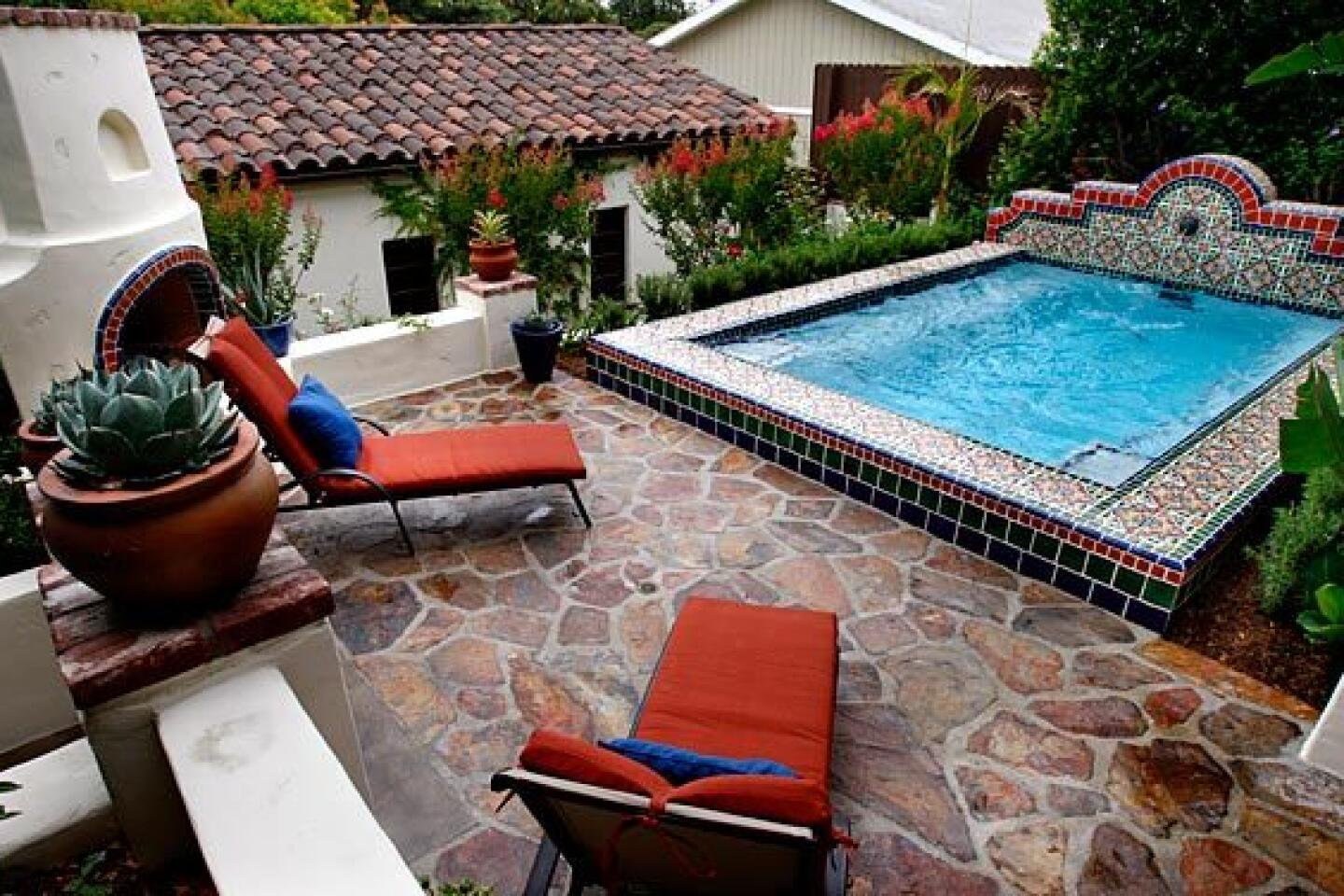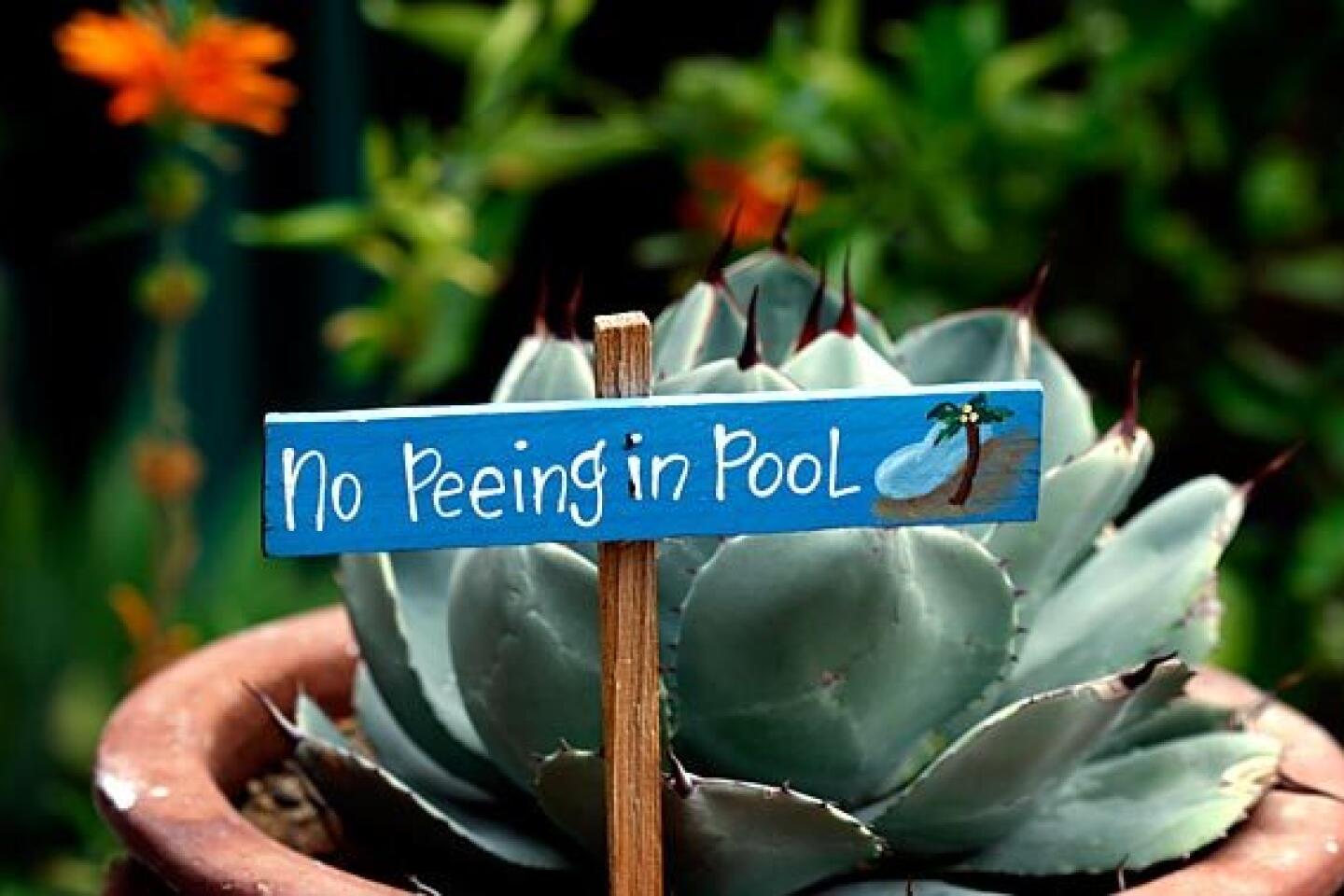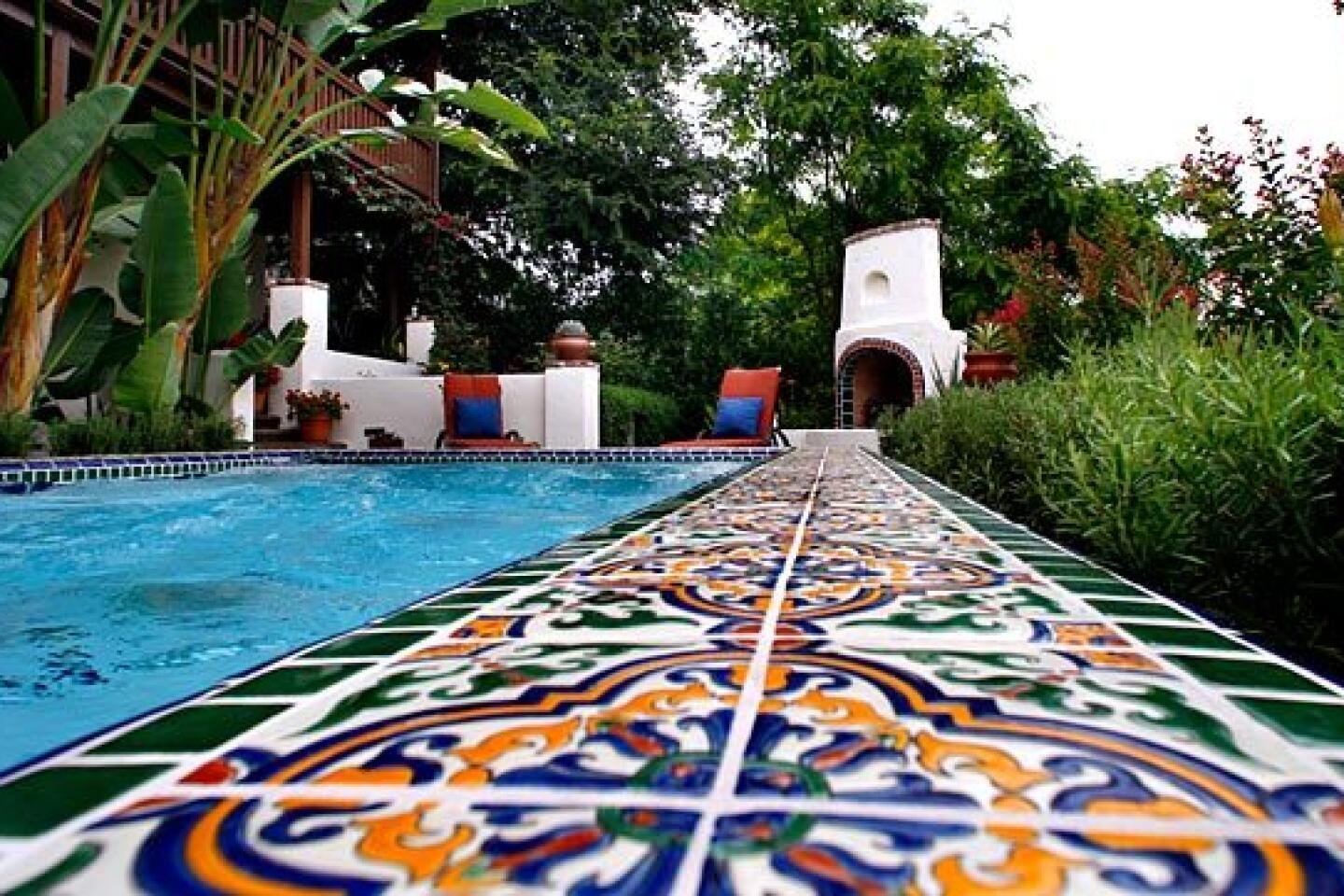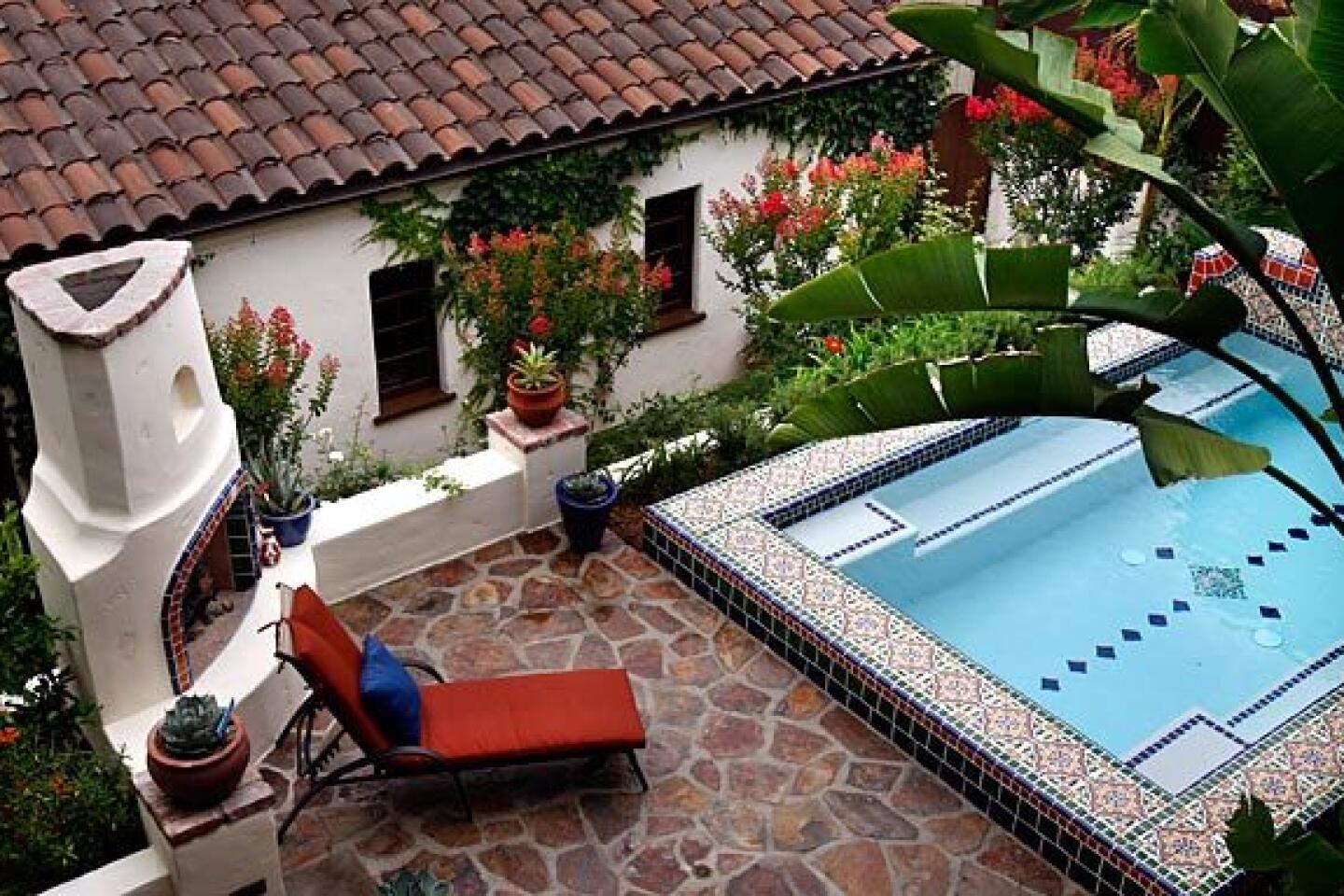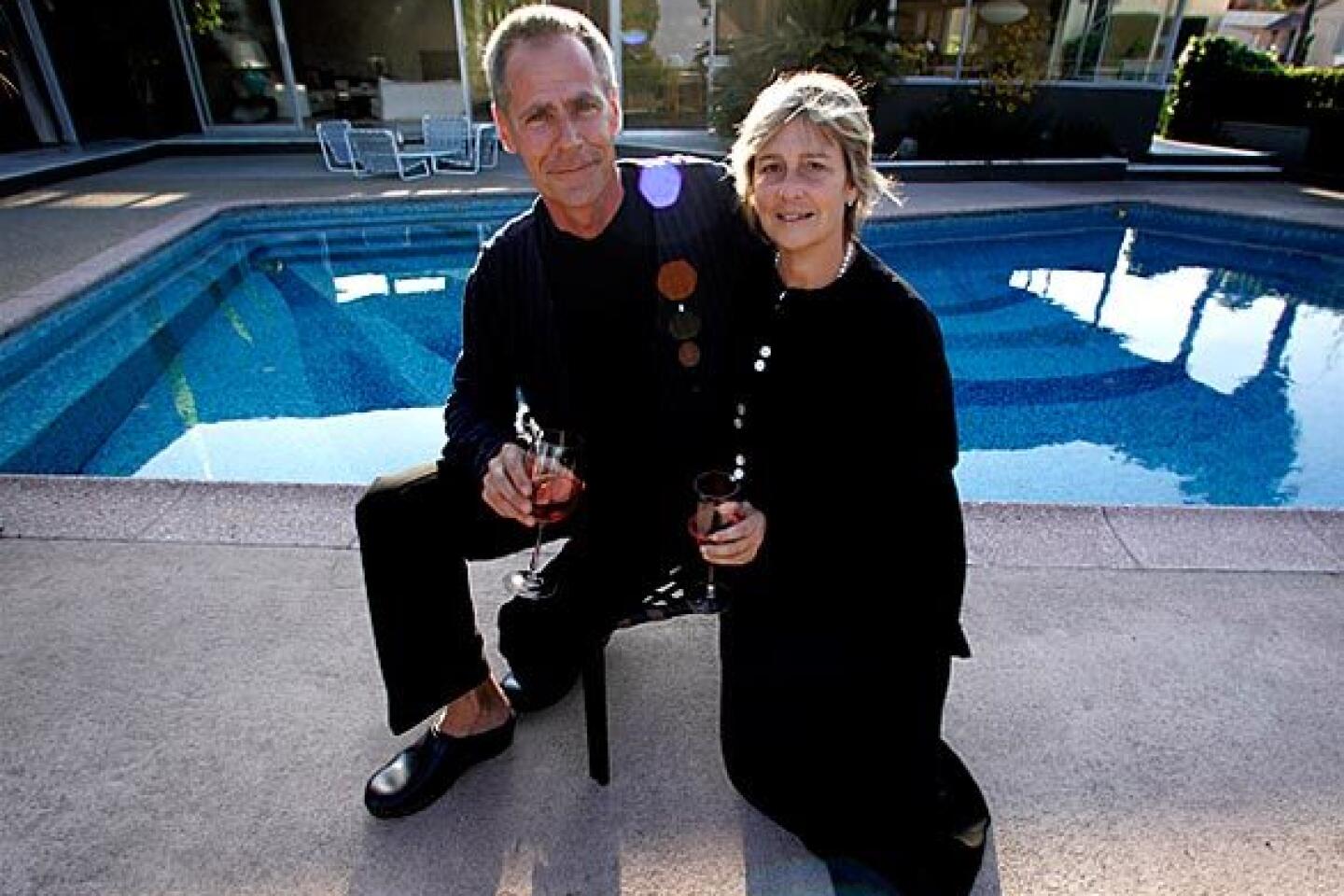A return to a mosaic of color
“The entire underwater surface of the pool at Mr. and Mrs. Sydney Abbotts’ home is covered with Mexican mosaic tile to create a jewel-like setting which intensifies the blueness of the water.”
Los Angeles Times, April 3, 1960
Lory Johansson remembers playing with her cousins during family gatherings at her Uncle Sydney’s house in the Baldwin Hills neighborhood of Los Angeles. Even as a young girl, she was impressed with the home’s sleek, modern architecture and her uncle’s flair for design, first featured in the L.A. Times nearly 50 years ago. The glass-walled rooms turned toward the pool as the home’s focal point.
“It was very exciting to come here,” she says. “This was the most spectacular representation of how I viscerally believed people should live the outdoor-centric life. My soul wanted to be here.”
A family dispute distanced Johansson from her Abbott relatives for more than 30 years until they reconciled in 2005.
That’s when Johansson returned to the one-story house, its interiors frozen in time, its dramatic mosaic pool still a perfect canvas painted with thousands of minuscule turquoise, azure and 24-karat-gold glass squares placed in wave patterns with a school of red-and-gold fish swimming at one edge.
After her uncle’s death in 2006, she and her husband, architect Mats Johansson, asked to buy the house. The purchase meant a change in locale and a whole new architectural vibe, she says.
“We moved from a dark Spanish house in Hancock Park,” she says. “And I’m so happy here.”
The interior designer and her husband have updated the inside, covered the pale yellow exterior in a color that Johansson calls “Mexican chocolate” and refinished the formerly orange and pink vintage Brown & Jordan chaises and beach chairs.
The furniture, not to mention the artistic pool, “is so appropriately cool for this midcentury modern look,” she says.
For years, Johansson has been adding glass mosaic patterns to her pool designs for big-budget clients, including one in Miami whose pool is based on a Versace dinner plate. She sources the artwork from Mosaicos Venecianos de Mexico, a Mexican company known since the 1940s for making intricate, hand-cut glass tile designs based on northern Italian techniques.
“It is by far and away the most amazing resource,” Johansson says.
Serendipity being what it is, Johansson discovered that her uncle’s pool was one of Mosaicos Venecianos’ first residential commissions in the U.S.
“My uncle was in Mexico on business when he saw a beautiful mosaic tile pool in Cuernavaca,” Johansson says. “He insisted on meeting the artist who made it and eventually brought him to Los Angeles to create our pool.”
Malena Perdomo, export manager for Mosaicos Venecianos, is the daughter of that mosaic artist, Manuel Perdomo, now 80.
“I couldn’t believe it when Lory told me about her pool,” Perdomo says, speaking by telephone from her studio in Cuernavaca, near Mexico City. “She sent me the pictures of it and I immediately took them to my father. He said, ‘Yes, I remember.’ ”
Tile pools seem to last forever, or at least longer than traditional plaster-finished ones, Johansson says.
“If you tile a pool, you never have to do anything to it,” she says. “There’s more initial upfront money in tile, but it doesn’t degrade.”
Hand-cut glass mosaics, such as the ones Mosaicos Venecianos artists create using old-world methods, can cost $120 per square foot or more. Johansson often combines the pricier decorative mosaics with a field of 3/4 -inch, machine-cut glass tile, which runs about $10 a square foot.
Resource: Johansson, (213) 924-3071.
